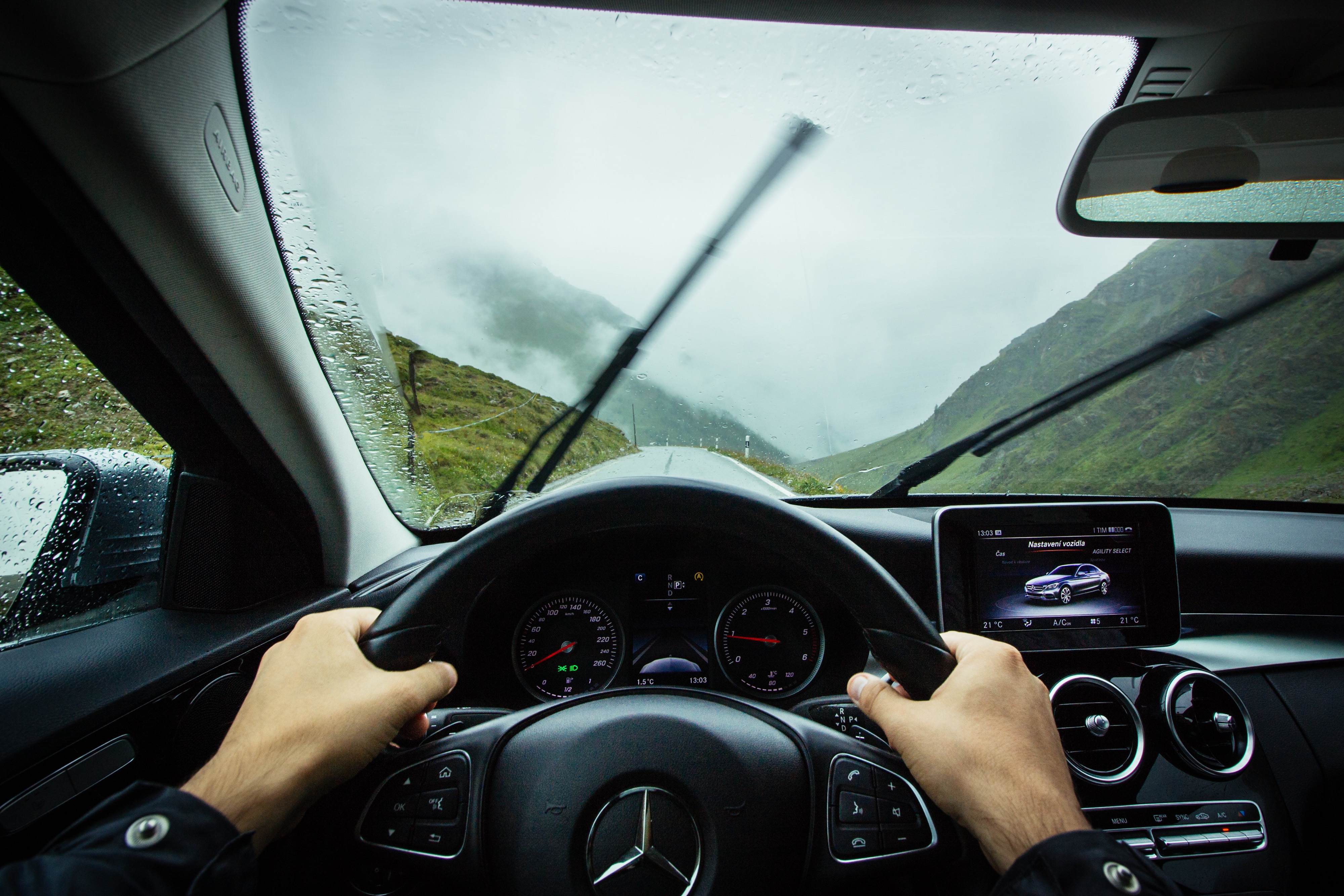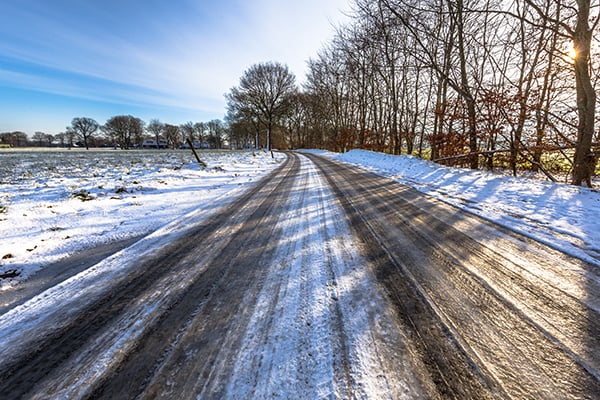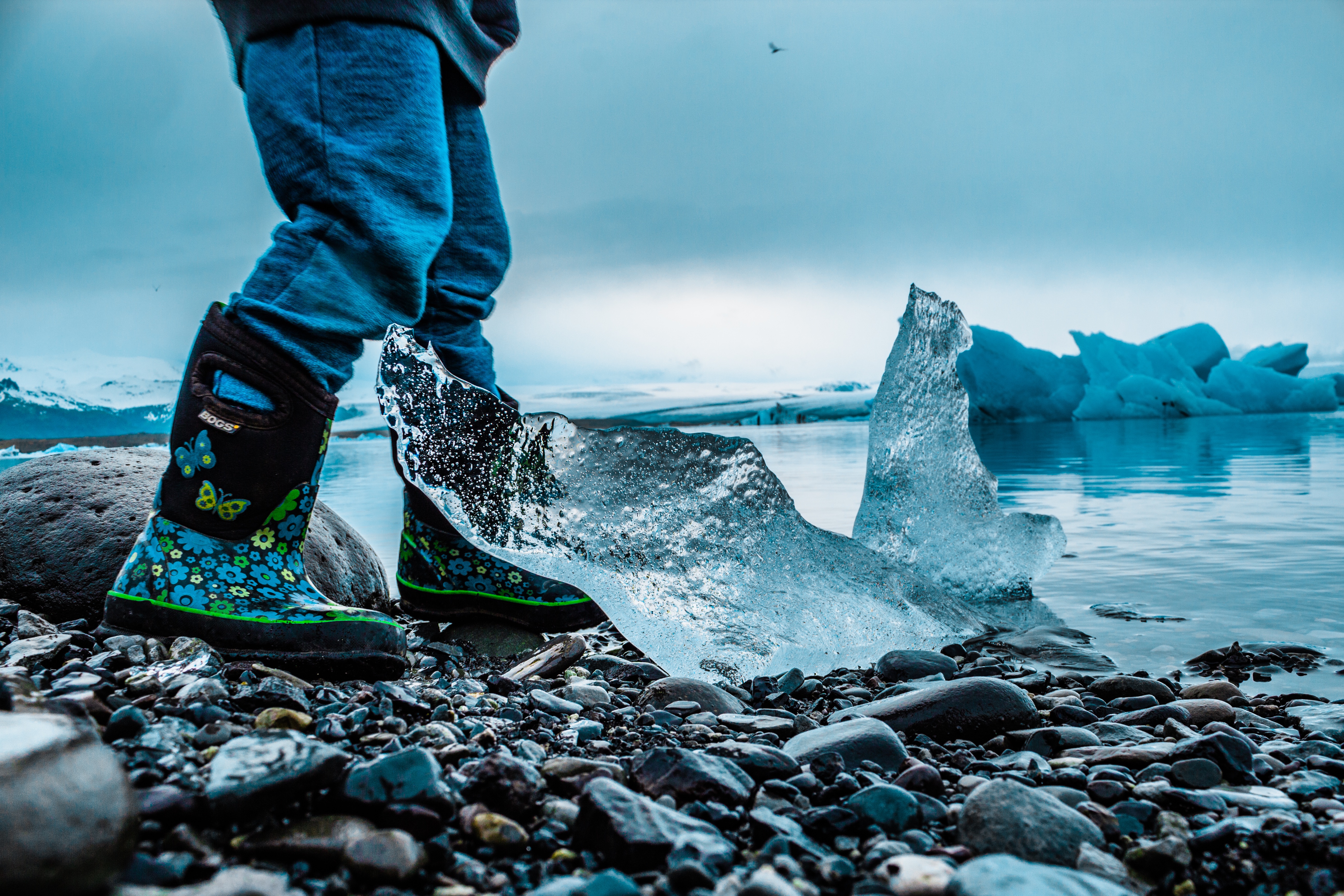Winter driving can be a serious struggle, especially if you aren’t used to it. Driving through snow can be complicated on its own but then you also have to worry about ice on the road. Some ice is easy to see and avoid, but black ice is the exact opposite. This is an invisible ice that can coat the roadway and cause a serious struggle when driving, and if handled wrong it can cause a serious accident. But don’t worry - we have some great tips for dealing with this chilly winter issue.

Understanding What Black Ice Is
Those who haven’t heard of black ice might think it’s, well, black, but that isn’t the case. It’s ice that forms on the road, but it contains fewer air bubbles than other ice. This makes black ice especially hard to detect when driving. Sometimes it might simply look like a spot of water on the road. However, while it might look like it’s innocent, it is anything but. Black ice is one of the most dangerous things you can run into while driving your car, truck, or SUV.
You’ll typically see black ice forming when the ground temperature hits freezing but sleet or rain is falling. In many cases, it forms in the night since sunlight can melt both ice and snow. Then when it cools down again, the water can freeze into ice. The worst places for black ice are near the bottom of inclines and around curves as well as areas that collect water normally. In most cases, you aren’t going to notice black ice until you are already on top of it.
Spotting Black Ice Early
It’s difficult to notice black ice since it appears to be nothing more than water. However, being aware of the weather conditions is a big part of it. If you know that it may go below freezing or it already has, it’s best to assume that any water you see on the road could be ice. While this won’t be accurate, it will keep you safe in the event that it is. When you treat every situation as if the worst possible result will happen, you might have to be more cautious and aware, but you will also be less likely to end up in an accident.

Ways to Avoid Black Ice
If it’s chilly outside, you may find yourself on black ice at any moment. It’s important to be vigilant and aware of what is going on around you. If you see a spot of water and think it might be black ice, drive around it if that’s something you can safely do. Being aware of the areas in town where black ice is common is also helpful because you can choose alternate routes when it’s below freezing. You should also watch for stranded drivers or skid marks, since that can be the sign of ice nearby.
Safety Tips for Driving on Black Ice
Since it’s impossible to avoid black ice in areas that get cold, the best thing you can do is be prepared. The black ice safety tips below will help you keep safe even if you happen onto a patch of invisible ice. These five tips are easy to implement once you know them:
01 – Drive Steadily and Slowly
Those who are familiar with driving on snow know that it’s best to drive slowly but at a steady pace. That is the best option when there may be black ice, as well. The difference is that snow can provide you with traction while black ice is smooth and is not going to help your tires stick. What that means is that if you are going too quickly, you might find that you can’t stop once you hit a patch of the invisible ice. The moment you realize you are on black ice, remove your foot from the gas as quickly as possible.
Another part of this tip is that you should keep your wheel straight as much as possible, which can help you coast right over the ice without an accident. If you happen to turn your wheel on the ice, you will be much more likely to lose control of your car. If your car begins to skid, you want to turn into the skid, not against it. Doing otherwise can send you shooting across the road in the wrong direction.
02 – Don’t Use Your Brakes
One of our tips for driving on black ice is that you should lay off the brakes. With a lot of driving situations that escalate into emergencies, the brakes can help you out of a jam. That isn’t the case for this problem. As you approach an icy patch, let your foot leave the brakes as early as possible. If this can be done before reaching the ice, that’s the best scenario. If your car is going a little too fast, you can pump the brakes, rather than slamming onto them to avoid a skid. Slamming on your brakes on black ice is the worst thing you can do, and it can escalate the problem.
03 – Understand What to Do During a Skid
The worst thing you can do during a skid on black ice is over-correcting. What this often does is make the problem more severe and send you spinning around the opposite direction. Instead, you want to turn into the skid and start pumping your bakes. When the skid begins to end, you will want to bring the steering wheel back to the normal position. After you find traction again, you can begin to correct the direction of your car. Be one of the cars driving on black ice with a driver who knows the proper protocol to avoid more trouble.
04 – Be Aware of What Will Not Help
When it comes to snow, four-wheel drive, studded tires, and snow chains can be a huge help. This is unfortunately not the case with black ice. Because there is no traction available on black ice, you can’t really do much to improve it. Many people think they are less likely to end up in trouble using these devices, but that’s not true. You still need to be careful and watch your surroundings as you drive in freezing weather. It’s an even better plan to have an emergency kit available so you can keep safe until help arrives if something goes wrong.
05 – Pay Attention to the Temperature

Almost every car that you can buy today has an external temperature readout. If you pay extra attention to the reading during the winter months, you’ll be better prepared to handle black ice when it happens. As soon as the reading drops below 32 degrees Fahrenheit, be more cautious. You may even want to do this if the temperature is a few degrees away since your readings may not be 100% accurate at all times.
If you follow these tips for driving on black ice, you’ll be much less likely to end up injured or in an accident. After you get used to the process, it will become second nature and you won’t even have to think much about it. Nobody wants to end up an accident, especially when it’s freezing outside, so do whatever you can to avoid that situation for yourself.

